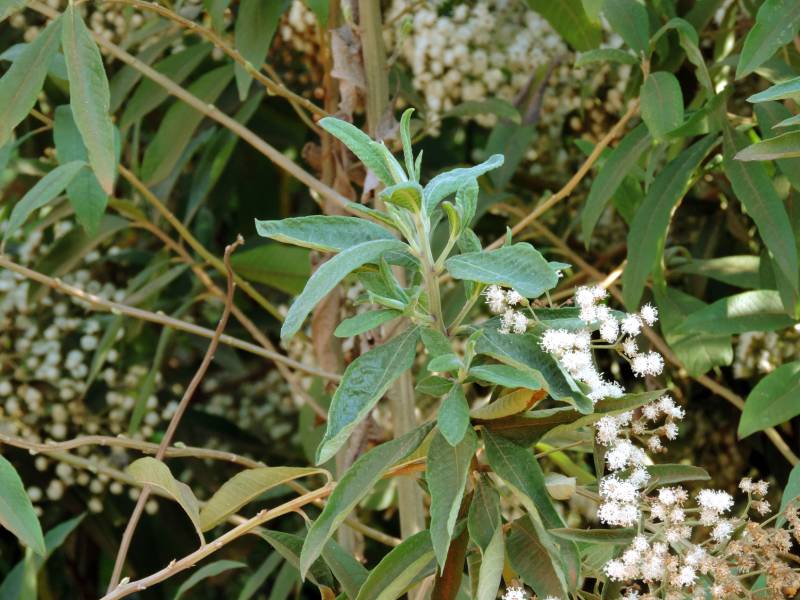CONSERVATION
Invasive Alien Plant Species
Invasive alien species pose a significant threat to the habitats in Zimbabwe, with the eastern highlands, belonging to the Afromontane phyto-region, being particularly vulnerable. This threat is primarily attributed to the extensive proliferation of exotic pine, gum and wattle plantations that were all introduced for commercial purposes. The Eastern Highlands, in particular, have witnessed the encroachment of Pinus patula on over 100,000 hectares of land. Additionally, Acacia mearnsii and Acacia melanoxylon have emerged as formidable invaders of montane grasslands. A. mearnsii, for instance, has aggressively occupied more than 200,000 hectares, predominantly in the mist belts of the Eastern Highlands, encompassing KBAs and IBAs in areas like Nyanga, Vumba, Chirinda and Chimanimani. While it’s widely acknowledged that invasive alien plants have a detrimental impact on native species diversity, comprehensive studies concerning the ecological consequences of their invasion in Afromontane habitats, particularly in the Manica Highlands spanning Zimbabwe and Mozambique, are scarce. Some initial research has revealed that areas heavily infested with invasive alien plants accumulate substantial layers of plant litter, leading to elevated temperatures, prolonged fire durations and a cycle of continuous burning. Nevertheless, there is a dearth of data pertaining to the vulnerability of landscapes to fire outbreaks in the Manica Highlands and the subsequent ramifications for biodiversity, notably in protected areas such as Nyanga National Park, which faces significant infestations of wattle. Furthermore, certain invasive plant species possess a competitive edge over native annual and perennial plants. Notably, species like Eucalyptus have the capacity to deplete soil moisture at a faster rate and to greater soil depths than their native counterparts. Additionally, they exhibit an increased rate of soil nutrient consumption, thereby impeding the growth rates of native species. Consequently, this phenomenon results in a substantial reduction in native seedling biomass and overall species richness. As the Manica Highlands contend with shifting weather patterns linked to climate change, limited research has delved into how these alterations are influencing the invasiveness and distribution of alien plants across the region.
Recent work, supported by the Rufford Foundation and conducted by Lameck Kachena, has investigated the impact of extreme climatic events, such as tropical storms, on the spread of an emerging invasive alien plant, Vernonanthura polyanthes, locally known as the Bee bush – see also https://www.youtube.com/watch?v=MQ4VXbEOH0c. V. polyanthes, initially introduced into Mozambique for its utility as bee fodder, is now rapidly expanding its territory within the southeast of the Manica Highlands. This phenomenon underscores the intricate interplay between climate change and the dynamics of invasive species. Recent research by Gwate et al. in 2023 has projected that many landscapes within the Manica Highlands are increasingly susceptible to V. polyanthes infestations, particularly under current climatic conditions. In addition to V. polyanthes, other emerging invasive alien plants, like the wild ginger plant, are undergoing rapid proliferation, particularly in wet areas both inside and outside protected regions, such as the Vumba Botanical Garden. This highlights the necessity for a location-specific database that tracks the expansion patterns of emerging invasive alien plants and predicts their potential ecological impacts. Furthermore, while the primary focus regarding invasive alien plants has been on regions like Chimanimani, Nyanga and Vumba, there exists a significant gap in understanding the extent of this issue within Chirinda Forest and various KBAs and IBAs of the Manica Highlands on the Mozambican side. Addressing this knowledge gap is vital to formulating comprehensive strategies for invasive species management across the entire Manica Highlands region. In addition to the paucity of ecological impact data related to invasive alien plants, conservationists in the region grapple with the formidable challenge of managing their proliferation effectively. The dearth of comprehensive data on these invasive species forces conservation stakeholders to resort to unsustainable, economically inefficient and less effective control measures to combat the spread of these alien plants. This predicament underscores the urgent need for a more data-driven and informed approach to invasive species management within the Manica Highlands.
For further information: kachena.lameck@gmail.com
Vernonanthura polyanthes, Chimanimani

